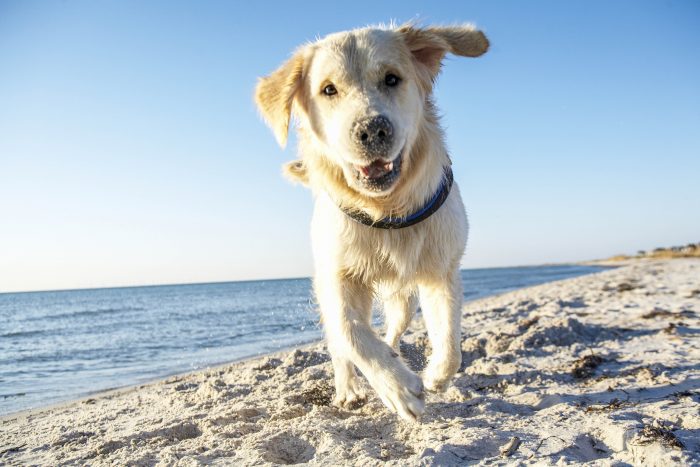By Matthew Kearns, DVM

The Canadian Forest fires are still burning and there are recommendations to stay inside. The good news is that the smoke associated with forest fires do not contain harmful gases and compounds in high concentrations as compared to a housefire. This does not mean that the smoke is not harmful, just less harmful. How does smoke and poor air quality affect our pets? Let’s use this article to explore this.
Fine particulates associated with forest fires can damage the airway starting at the larynx (voicebox) all the way down to the lungs. These particles (especially if they contained chemicals like plastics, etc) can cause inflammation that will decrease clearance, cause tissue sloughing, promote small clot formation, and lead to edema. Edema is a diffuse accumulation of fluid within the tissue itself. This edema can narrow the diameter of trachea, or windpipe, as well as cause fluid to settle in the lung tissue itself.
A secondary complication to this tissue damage and edema is the risk of secondary infections. Bacteria will take advantage of this temporary breakdown in the immune system and cause bacterial bronchitis and pneumonia.
The first gas to consider in any fire is carbon monoxide. Carbon monoxide is in higher concentration in any fire. Carbon monoxide is such a dangerous compound because it competes with oxygen to bind with hemoglobin on red blood cells. As a matter of fact, hemoglobin has an affinity of 200-300 times more for carbon monoxide than oxygen. This means red blood cells can carry less oxygen and, when red blood cells can carry less oxygen, less oxygen gets to vital tissues. At the cellular level low oxygen levels leads to cell death and the release of all sorts of cytokines, or inflammatory chemicals. This leads to more cell death and entire organ systems shut down. This happens very, very quickly.
The treatment of choice with any airway injury secondary to smoke inhalation is to move our pets out of contact with the smoke. If breathing is labored then oxygen is either just as important, or a close second. Other treatments are what are called symptomatic, or based on symptoms if they present themselves. If there is coughing, cough suppressants are used. If there is wheezing, anti-inflammatories and antibiotics are used.
Once again, the good news is the poor air quality secondary to these fires presents less dangerous symptoms. However, try to keep your pets inside during these poor air quality days and bring your pet immediately to your veterinarian if any symptoms of respiratory distress occur.
Dr. Kearns practices veterinary medicine from his Port Jefferson office and is pictured with his son Matthew and his dog Jasmine.















